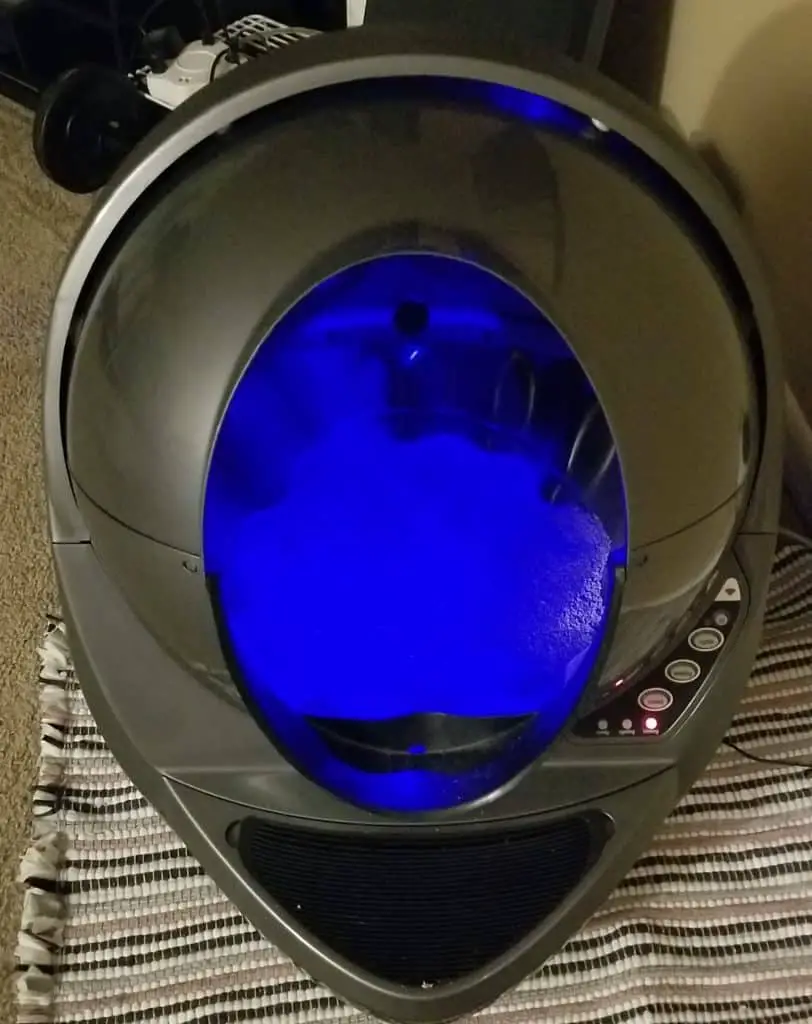More Meows is an Amazon Associate. As an Amazon Associate we earn from qualifying purchases. We may also earn commissions if you purchase products from other retailers after clicking on a link from our site.
Stray cats can appear from nowhere. One day they aren’t there, and the next day they act like old, established neighbors. You may decide to start feeding stray cats, and they may make themselves comfortable with your property, even if they don’t permit you to get close. The problem with stray cats moving into the area is that they can carry diseases.
Many stray cats carry diseases, some of which are zoonotic and can be transmitted to humans. The two most dangerous diseases that stray cats can carry are Feline Immunodeficiency Virus and Feline Leukemia. These two diseases cannot infect humans but are potentially fatal to your pet cat.
Stray cats do not have access to vaccinations, parasite preventatives or treatments, and routine medical treatments, so they are more susceptible to diseases. When they move into your area, they can transmit these diseases to your pet cats and even to you and your family.
What are the most common diseases carried by stray cats, and what should you do if a stray cat moves into your area?

Zoonotic Diseases from Cats
Cats are able to spread Zoonotic diseases to humans. Some of the more commonly cat spread zoonotic diseases are Campylobacteriosis, Cat Scratch Disease, Salmonellosis, Toxoplasmosis, and other parasitic infections.
These diseases are more likely to affect pet cats than humans, but certain people are more at risk. These include children under five years old, adults over the age of 65, and immunocompromised persons (chemotherapy patients, immunosuppressant users, people with HIV/AIDS, lupus, etc.).
Can Humans Pick Up Diseases from Cats?
Many diseases are transmitted through the feces of infected cats. Typically, this refers to the ingestion of cat fecal matter. If you are aware that you have touched feces or are cleaning out a litter tray, you should thoroughly wash your hands and do not bring your hands near your mouth until you are sure your hands are clean.
However, fecal particles can be microscopic and sit on the flowers you carry into your house, the vegetables you grow in your garden, your cats’ fur, etc. To minimize the risk of contracting a zoonotic disease, you need to be vigilant about washing your hands after gardening, grooming, petting your cat, etc.
Campylobacteriosis in Cats
Campylobacteriosis is a bacterial disease that is transmitted through contact with the feces of an infected cat. This could be a risk to you and your pet cats if the stray cat started to use your garden as a toilet. Cats infected with Campylobacteriosis can be asymptomatic, or they can have bloody or non-bloody diarrhea.
Your cat may encounter the feces while digging holes for their own business, or they may try to investigate who has been on their property.
You or your family can encounter the infected feces while playing outside, gardening, cleaning up storage sheds, etc. Additionally, if your cat becomes infected, your risk increases as you are in daily contact with their litter tray.
In humans, Campylobacteriosis symptoms include bloody or non-bloody diarrhea, fever, nausea, vomiting, and abdominal cramps. These symptoms can last for up to seven days.
Cat Scratch Disease in Cats
Cat Scratch Disease (CSD) is a bacterial disease. Your pet cat can become infected with Cat Scratch Disease if they catch fleas from an infected stray cat (fleas carry and transmit this bacteria), or fighting with an infected cat (scratches and bites). Cats typically present with mild sickness and short-lived fevers.
Humans are most likely to be infected through scratches inflicted by an infected cat, hence the name. However, the disease is also transmitted through saliva, so if your cat or the stray cat bites or licks you, you may become infected.
Humans present with a red bump or blister at the infection site (bite or scratch), swollen lymph nodes, mild fever, joint and muscle pain, and fatigue.
Salmonellosis in Cats
People may not immediately associate Salmonella poisoning with diseases in cats, but they can contract this bacterial infection by eating wild birds and raw meat. As stray cats are hunter/scavengers, discarded raw meats and wild birds form part of their diet, and they can easily contract Salmonellosis.
Salmonellosis is transmitted through contact with the feces of contaminated cats. As with Campylobacteriosis, if a stray cat uses your garden as a toilet, you and your pet cats are at risk of catching the disease. Adult cats show no signs of being infected, but kittens can get diarrhea. Humans display the symptoms of food poisoning when infected.
Toxoplasmosis in Cats
Toxoplasmosis is caused by Toxoplasma gondii, which is a parasite. This parasite does not usually cause severe illness in cats but can also infect humans. Cats contract Toxoplasmosis by eating infected birds and rodents (often included in a stray cat’s diet).
Although it does not cause illness in cats, it can be transmitted to humans through contact with infected cat feces.
Parasitic Infections in Cats
Stray cats introduce fleas, scabies, and intestinal worms into your household.
Flea bites on cats: Bites from fleas cause local inflammation and itching in both humans and cats.
Tape Worm in Cats: Cats can get tapeworm by eating infected fleas while grooming. Humans can also accidentally ingest the fleas. These parasitic worms don’t cause illness in either cats and humans, although severe infestations can cause weight-loss. However, it is not nice to think that you or your cat have worms!
Scabies in Cats: This is an infection caused by mites that burrow into your or your cat’s skin, causing itchy lesions.
Hookworms in Cats: Hookworms can cause weight-loss and anemia in kittens but typically don’t cause illness in adult cats or humans.
Roundworms in Cats: Roundworms also affect kittens more than adult cats, causing diarrhea and dehydration. In humans, these roundworms can migrate to the eyes or internal organs and can be very dangerous.

Cat Only Diseases
The two most dangerous cat-only diseases that can be transmitted to your pet cats from strays are FIV and Feline Leukemia. FIV is transmitted to cats through bite wounds and compromises a cat’s immune system. Feline Leukemia is easily transmitted to cats through blood and saliva.
For more information about these diseases, you can visit the ASPCA’s website.
Feline Immunodeficiency Virus (FIV)
FIV is the cat equivalent of HIV/AIDS and is transmitted through non-superficial bite wounds from an infected cat. As cats are territorial, fights that result in bite wounds are not uncommon.
Cats with FIV can live relatively long and happy lives. Still, it does compromise their immune systems, making them more susceptible to infections, which can then spread rapidly without early treatment.
Feline Leukemia
Feline Leukemia also compromises the immune system of cats. What makes it more dangerous than FIV is that it is more easily transmitted. Feline Leukemia is transmitted in blood and saliva and, although less commonly, via urine and feces.
So, grooming, fighting, and sharing bowls with infected stray cats can lead to Feline Leukemia’s development in your pet.
Here are some of my favorite cat products
In addition to checking out some other More Meows articles, I hope you’ll check out some of my favorite cat products as well. These are affiliate links, so if you end up using them, I’ll get a commission at no extra cost to you. These are the products I really do find most helpful.
Litter Box: I started out with normal, traditional litter boxes for my cat. Then, I tried this automatic litter box on Amazon (affiliate link), which helped reduce the litter upkeep. Finally, I am now a believer in the Litter-Robot 3 Connect on Amazon (affiliate link). This robotic litter box is not for everyone based on the price tag, but for me the benefits (very little upkeep, works efficiently, clean, mobile app) far outweighed the cost.

Cat Tree: I have purchased a couple of this Amazon Basics Cat Tree on Amazon (affiliate link). My cat spends a lot of time on and around this cat tree, which I position near my sofa. She uses the scratching posts on this cat tree multiple times a day, which means she is not scratching the sofa instead.
Cat Water Fountain: I love this cat water fountain on Amazon (affiliate link). There are three main benefits to having a water fountain like this for your cat. The first benefit is that it keeps water running so that your cat doesn’t need to drink still water. The second benefit is that it filters the water. The third benefit is that it will keep your cat hydrated!
Are Stray Cats Safe to Touch?
No, stray cats are not safe to touch with your hands if you have pet cats. There is the risk of stray cats transmitting diseases to you and your cats when they come into your property or if they are handled by you.
If you keep an outdoor cat, chances are that they will come into contact with stray cats and these diseases just by being outdoors and roaming the neighborhood. Your pet cat is also just as likely to catch and eat disease-carrying birds and rodents.
Stray Cat Fighting My Cat
Your cat may be more likely to fight with a stray cat that is on its property, exposing itself to diseases transmitted through scratching and biting. But, if you let your pet cat outside, your cat is also likely to leave your property and invade the stray cat’s territory, causing fights.
To read more about cats fighting and if they will fight to the death: Click Here.
Helping Stray Cats
You should consider helping the stray cat. This does not mean trying to coax a stray cat into your house. You can feed the stray cats to eliminate their need to eat potentially infected creatures. Also, try to catch stray cats with traps and get them vaccinated, spayed and neutered.
But don’t just feed stray cats. Pets WebMD recommends trying to catch them and take them to a veterinarian or an animal shelter clinic to be sterilized, screened for medical conditions, vaccinated, and treated. There are also animal rescue organizations who you can contact to help you catch them.
Are Some Stray Cats Social?
Some stray cats are social. If the stray cat seems socialized to humans (i.e., they were once pets but got lost or were abandoned), they may be re-tamed and re-homed. If they are feral, then they can be released back into the neighborhood.
Some people do not agree with releasing cats again. Still, Pets WebMD explains the benefits of the trap-neuter-release program and invites cat-lovers to become colony caregivers in their area if there is more than one feral or stray cat living there.
Can you get a disease from touching a stray cat?
It is possible for a person to catch a disease from a stray cat but it is rare. If you have a cat of your own, you should not handle stray cats with your hands out of precaution not to transfer anything to your own feline.
Is it safe to pet a stray cat?
It is safe for a human to pet a stray cat but there are risks. There are diseases that can transfer to humans although it is rare. If you own a cat you may not want to pet a stray cat because you could pass something on to your stray cat.
Can stray cats pass diseases to humans?
Yes, stray cats can pass diseases to humans. Stray cats are known to fight with each other as well as prey on mice and birds. These activities can expose stray cats that can pass on to humans. It is rare that stray cats pass diseases to humans.
Is it safe to bring a stray kitten inside?
No, you should not bring a stray kitten inside. If a stray cat needs help, humanely trap the stray kitten and get help from an animal hospital. You do not want a stray kitten, that could be carrying parasites and diseases, into your home until it is vaccinated and spayed or neutered.
How do you solve a stray cat problem?
The best ways to solve a stray cat problem are to partner with the community in humanely trapping stray cats so that they can be vaccinated and spayed or neutered. Stray cats that are social may be adopted or if they are not social they can be safely released once spayed or neutered.
Dangers of feeding stray cats
If you feed stray cats they will start hanging around expecting food. Additionally, when people feed cats outside other animals, like raccoons, will frequently show up and intimidate the cats to steal the food. If you let your pet cat outside it could be more likely to come into contact with the stray cats you are feeding and expose it to fighting or disease.
Is it wrong to feed stray cats?
It is only wrong to feed stray cats if it is illegal in your area. I do not recommend feeding stray cats because they will start expecting you to feed them regularly. Additionally, feeding cats outside can attract other animals that can intimidate cats.
What do stray cats like to eat?
Stray cats like to eat mice and birds and they are exceptionally good at catching them. Additionally, stray cats will eat food that they stumble upon, such as from an outdoor house cat’s food bowl. Stray cats are good hunters that will eat small wildlife.
Conclusion
Stray cats can carry many diseases. Some of these diseases can even affect humans. You should be careful about how you interact with a stray cat to minimize the chances of being scratched or bitten. If they decide to use your garden as a toilet, you may still be exposed to many possible diseases. Your pet cats can also contract the diseases and spread them to you.
Most of these cat zoonotic diseases can be contracted by your cat while exploring outside (if you let them out), so the risk is not too much higher with a stray cat living in your area. Additionally, these diseases are not too dangerous and can be treated in both humans and cats.
The biggest risks to cats are FIV and Feline Leukemia. These cannot affect humans, but they are immunocompromising diseases that can be fatal in cats. If your cat wanders off your property, they can pick these diseases up, so the risk is not too much greater by the presence of a stray cat in your immediate area.
If you are worried about the diseases that a stray cat can carry, you should try to help them. Contact your local animal welfare clinic and ask them for assistance or the number of the feral/stray cat colony caregiver in your area. If there is no caregiver, you can consider becoming one yourself.
If you liked this article, please check out a few of our other articles:
- Will Stray Cats Drink Antifreeze? Scary Info Here: Click Here
- Do Stray Cats Bury Their Poop? The Best Smelly Answers: Click Here.
- 13 Beautiful Cat Breeds Similar To Siamese Cats: Click Here.
Pro-Tip: If you are thinking of buying a cat or are a cat owner already, then you should be aware that taking care of the litter box can be a real chore. In this age of smart products, an automatic litter box has been created that actually makes life easier with taking care of the litter box. If you want to make your life much easier with a litter box that means you’ll never have to scoop litter again, check out the best automatic litter box on the market (in my opinion) on Amazon.
